Download PDF of "Back to Roots"
When a Nevada-based grocery store chain needed to replace its legacy computer systems, its management team faced the common dilemma of whether to purchase an off-the-shelf product or custom-build an application.
Management’s decision to build a new system from scratch points to the latest trend in application development.
"We were looking outside to purchase software and couldn’t find one package that met our needs," explained Rob Dornberger, Vice President of Information Technology for the grocery store chain, Scolari’s Food & Drug Co. "We would have had to purchase a retail system and warehouse system, and the cost of both together would have been $750,000 to $1 million more if we had purchased the software outside and then customized it (versus building it in-house from scratch)."
For help developing the new computer system, Dornberger turned to a company that has had its roots deeply entrenched in the custom-built software niche for the past 13 years, Surround Technologies, LLC, an IT consulting firm with offices in New Jersey and Florida.
Surround Technologies’ Founding President Lee Paul wasn’t surprised by Dornberger’s decision.
"The latest trend in software development is actually leading back to its roots of building applications in-house, from scratch," Paul said. "Surround Technologies started out in the early ‘90s building custom software, and we still do it today. More and more companies are realizing that many off-the-shelf applications don’t meet their unique business needs."
Surround Technologies successfully completed the Scolari’s project when the new system that serves the grocery chain’s 18 stores in Nevada and California went live on March 20. The new system is used by 60 to 70 users and resides on an IBM i-Series Model 820 server.
"The system exceeded our expectations," Dornberger said. "Just the way that it ties everything together, and the professional look and feel of the system, it doesn’t look like it was developed in-house. It looks like it was developed by a major software company."
The Challenge
Scolari’s Vice President of Information Technologies knew it was time to replace their legacy computer systems when the code had become too difficult to maintain.
"We really weren’t able to upgrade the existing system," Dornberger said, explaining that the old system could not keep up with changing business requirements, such as item identification numbers growing in length. "The system had gone through so many changes over the years. It was just too difficult to support it. Any time we made changes we had more problems."
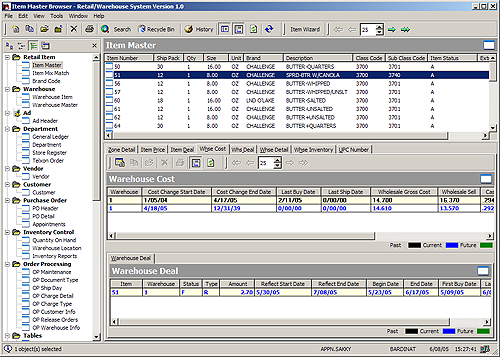 Scolaris Challenge
Scolaris Challenge Dornberger’s team wanted to replace the RPG-based 5250 system with a modern graphical interface. They also wanted a system on which they could continue to build into the future. After making the decision to custom-build an application, the team looked into several software development packages, including Java, Visual Basic and LANSA.
Dornberger’s team determined LANSA offered them the most complete and productive development solution in an environment most familiar to their current programming staff. Once they purchased Visual LANSA, however, they faced a new challenge: How were they going to get their green-screen developers up to speed on developing for a graphical interface?
The Solution
That is when Dornberger contacted Surround Technologies, a leading LANSA developer and business partner who also sells their own development tool called Envision Visual LANSA Accelerator.
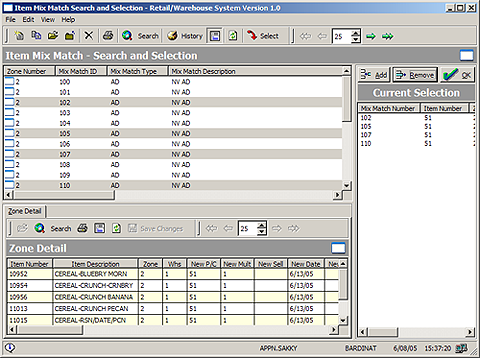 Scolaris Solution
Scolaris Solution "We were really impressed with what they were doing," Dornberger said of the demonstration.
The VL Accelerator provides a framework for developing in Visual LANSA, according to Maciak. "Envision VL Accelerator helps you develop, maintain and enhance VL applications by giving you the architecture, the base pieces, to program in Visual LANSA. The components of Envision VL Accelerator include a code generator, templates, wizards, and fully built functional modules, such as search engines."
Additionally, according to Maciak, because VL Accelerator provides professional-looking screen templates to be used out of the box, the developers no longer have to worry about fiddling around with the user interface. "It frees up the developers’ time to concentrate on their programming and making sure they are meeting their business needs," he said. "The developers no longer have to worry about the look and feel of their application, since that is provided for them."
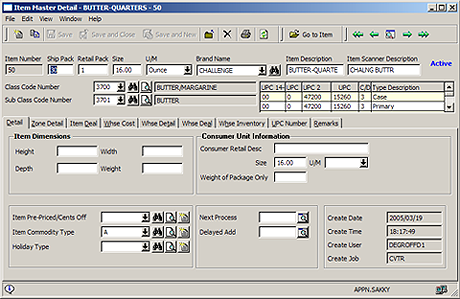 Scolaris Solution
Scolaris Solution With minimal training in Visual LANSA, Scolari’s programmers were able to complete the project under the guidance of Surround Technologies’ lead developer, Tommy Bardinas.
According to Bardinas, Scolari’s programmers would have had a monumental task to rewrite their system without Envision VL Accelerator.
"They wouldn’t even have attempted this rewrite without Envision VL Accelerator," Bardinas said. "The development time was cut by more than half of what they would have spent trying to write this system themselves."
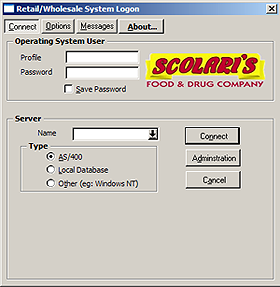 Scolaris Solution
Scolaris Solution Dornberger agrees with Bardinas’ assessment: "I think it was pretty easy for our programmers to catch on and work with (the Accelerator tool). It really helped using the VL Accelerator because they were able to do a lot more advanced programming more quickly. It was a lot simpler to use than just straight Visual LANSA."
Dornberger recognizes the time and cost savings from having used Surround Technologies’ Accelerator tool.
"This project would have taken us about 50% longer if we hadn’t had the Accelerator, (and) we wouldn’t have gotten the same results we did – the consistency, the professional look and feel, the searching functionality, and the navigation within the system," he said.
Scolari’s programmers eagerly accepted the new development environment as well. "The programmers were real excited about something new and working with it," Dornberger said. "We didn’t have any complaints from that side."
Additionally, the business users of the Scolari’s system eagerly accepted the new user interface. "It makes cross training employees easier when they move from departments because the systems have the same look and feel now," Dornberger said, explaining that the previous systems had inconsistent user interfaces and navigation functions. "We’ve gotten a lot of comments (from our users) that the new system is easier to use."
The Benefits
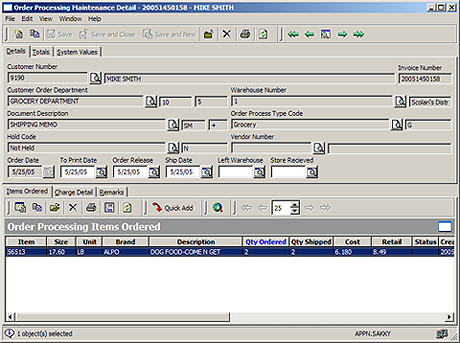 Scolaris Benefits
Scolaris Benefits Developing in Visual LANSA using Surround Technologies’ Envision VL Accelerator tool resulted in a more efficient system built in half the time that takes advantage of the latest in Windows technology, according to Bardinas.
Scolari’s new system manages all of the information related to the grocery store chain’s inventory, prices, promotions, labels and signs, ad circulars, purchase orders, and warehouse and distribution channels.
Scolari’s employees in each store can enter orders for new items to be delivered. The system automatically determines if the item is in stock in the warehouse. If it is in stock, the system automatically tags it for delivery to the store. If the item is out of stock, the system automatically notifies the buyer for reordering. For ordering, the new system also provides price optimization using rules based on various business metrics such as gross margin and competitive pricing.
Additionally, the system is more efficient than it was previously, according to Dornberger. For example, some jobs that previously took the user an hour or more to do now take as little as 15 minutes. That results in a tremendous time and cost savings. The system also provides integration with other Windows based software like Microsoft Word, Microsoft Excel, and graphical reporting and query tools.
LANSA representative Erik Hagendijk called the Scolari’s project phenomenal. "The combination of Surround Technologies’ product and the LANSA tool gave them so much of an advantage for maintainable code then they ever experienced before," he said. "That is a phenomenal win for them. It really has helped them put the application together with a very small amount of resources."
Conclusion
Scolari’s management is pleased with their partnership with Surround Technologies to build their new system.
"Surround Technologies was a great company to work with," Dornberger said. "Tommy (Bardinas) supported us and did everything possible to make this project work. And Derek (Maciak) was great to work with. We felt like they really wanted to make this project a success. They followed through and did everything it took to get this project done."
Dornberger is looking forward to continuing to build on his system, which will be easier with Visual LANSA as the underlying architecture.
"This is the base that we are building on for the future," he said, adding that his future plans include moving the system to a Web interface and enabling the system to talk to Pocket PCs. Dornberger is especially looking forward to the Pocket PC functionality, since that will allow Scolari’s employees to punch in new orders directly from their grocery store aisles.
Dornberger also is anticipating that his home-grown system will realize a sizable cost savings for his company.
"We save $100,000 a year in maintenance we would have incurred if we had gone out and purchased a system," he said. "And we are able to actually make changes ourselves and fix problems right away. I think we are going to see a 25% reduction in our supply costs through better management, … better tracking of inventory and better auditing capabilities."
Paul is pleased with the Scolari’s partnership as well. "The Scolari’s management team envisioned having an integrated, easy to use system that takes advantage of the latest technologies. Our Envision LANSA Accelerator tool and top-notch development team helped them achieve that goal in a cost-effective manner."